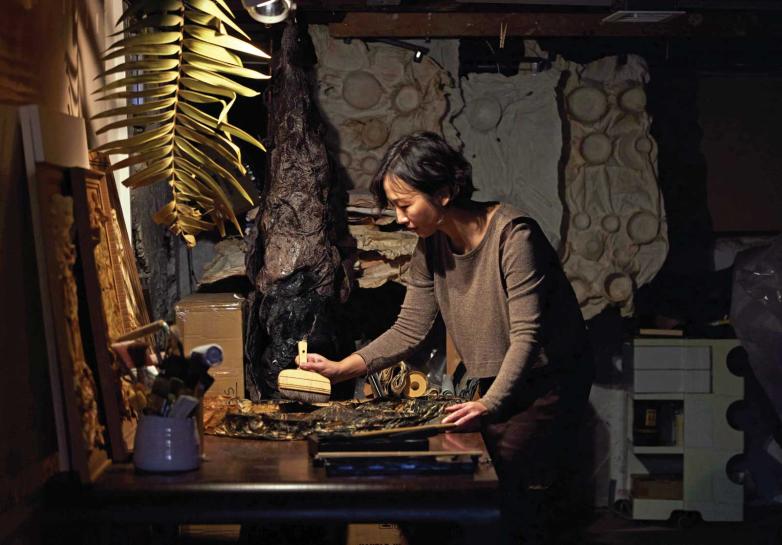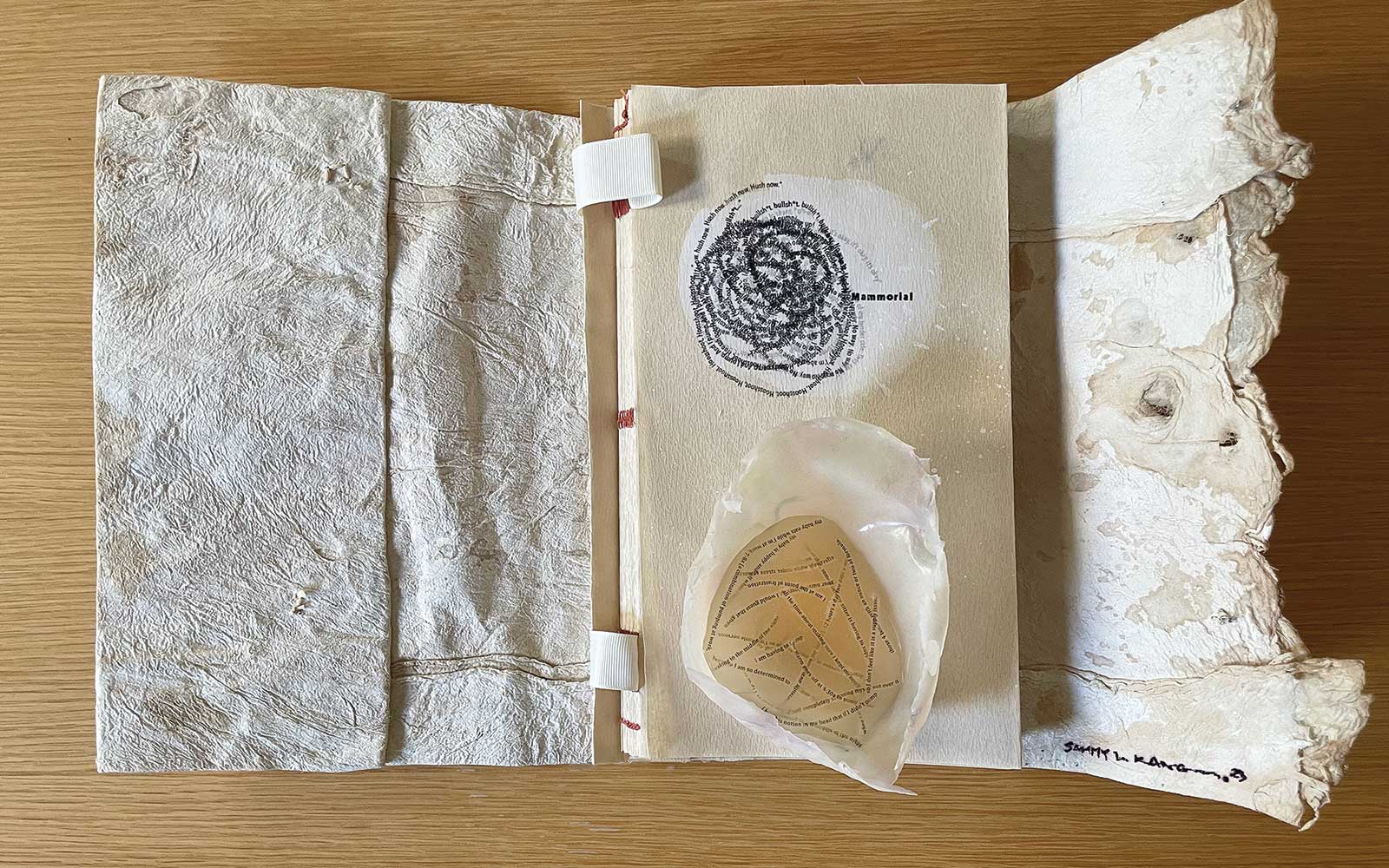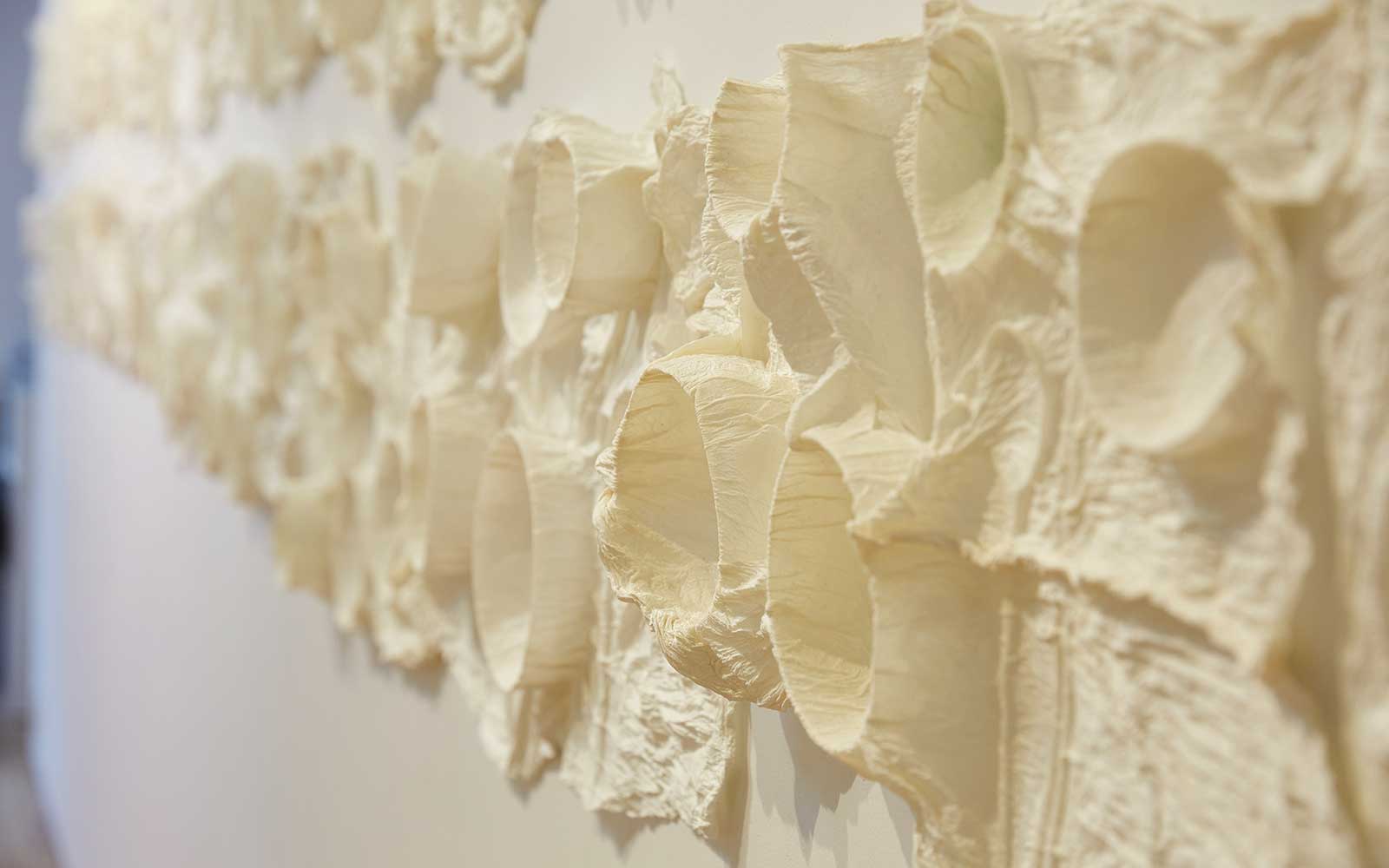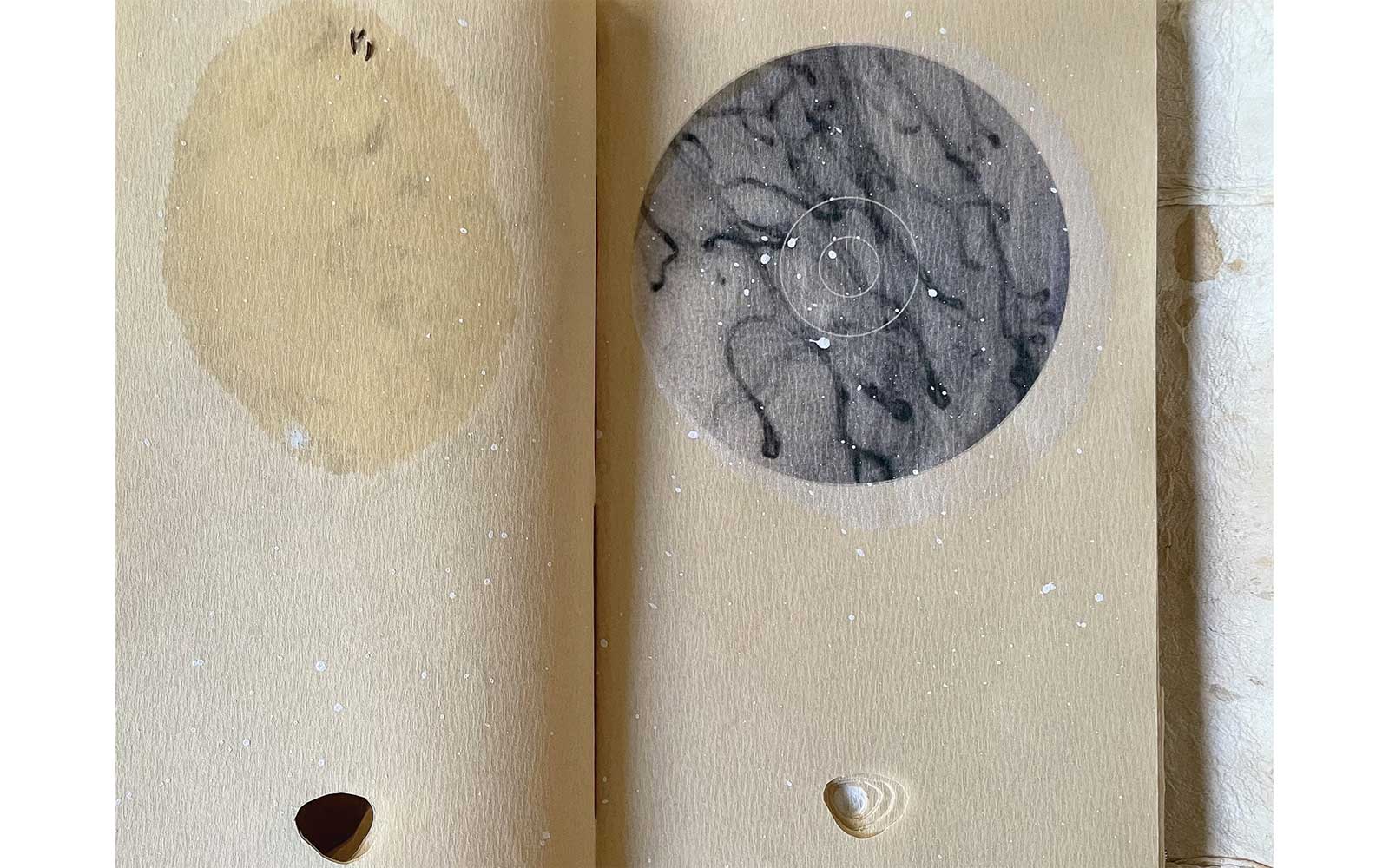In Denver, Lee founded Collective SML | k, an artist-run project space promoting Asian and Asian American art and narratives. Recently, she exhibited her hanji-inspired art in a solo show at Denver Botanic Gardens and in a group show at Denver’s Museum of Contemporary Art. She also participated in a two-person show at the Korean Cultural Center in Los Angeles, celebrating 120 years of Korean immigration history.
The history of hanji includes the traditional harvesting of mulberry bark, a communal Korean winter pastime. “Before agricultural activities got into full swing, villagers would use this slower working period to participate in the laborious process of papermaking,” Lee said. Mulberry bark is a renewable resource, making hanji a “green” paper. “The trees are bountiful in Korea, thriving on the country’s rocky mountainsides,” Lee added.
In addition to using hanji paper in her art books, Lee casts the paper into sculptures.
“My starting point is putting handmade hanji back into the water, agitating fibers, layering multiple sheets, and pounding to create a thicker, leather-like substrate that can take form as a sculptural material,” she said. “My undoing, multilayered, and transformational process resembles my immigrant identity.”
Lee emphasized that the hanji-making process lends strength to the paper. “The single cord-forming method, or oebalddeugi, is a derivation uniquely devised in Korea,” she said. “This approach allows fibers to move freely and overlap. The fibers often crisscross at ninety-degree angles as a result, contributing to the paper’s rugged nature.”
The process inspired one of hanji’s nicknames: “yin-yang paper.” Lee said, “I like challenging people’s perception that the paper is weak.”



















